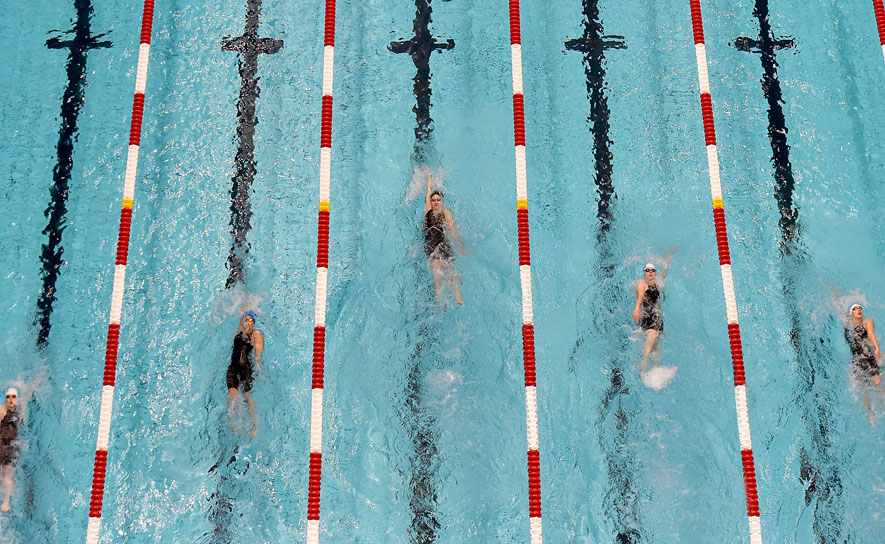USA Swimming News
Why Long Course is the Best Course

by Mike Gustafson//Contributor
Every summer, it happens: Swimmers pack bags, goggles, and suits, and wander out to the edges of towns and cities towards a gigantic, expansive sea of blue. These swimmers stand on this veritable sea’s edge and stare at the infinite glass-like watery surface, squinting into the distance to see the opposing concrete wall. There are deep breaths. Quiet self-affirmations: I can do this. I can make it. The coach starts the pace clock and tells the swimmers to get in. And they take a deep breath, point towards the other wall, and begin the arduous voyage.
Yes, the transition from short course to long course can be quite an adventure.
Growing up as a swimmer, I saw short course pools as my happy little pond, whereas those scary long course pools were less happy and far bigger. The transition to long course often felt like being plopped into the Atlantic Ocean. Swimming in a long course pool is an exercise in patience and faith: You wait to see that wall and, after a long struggle, when you don’t see that wall as soon as you’d like, you have faith that the wall will come one day… The wall will come.
Yet, long course doesn’t have to be viewed as an excursion to StruggleTown. It’s not the Atlantic Ocean. Rather, long course is actually far superior to its little sibling, short course. There are fewer turns. Swimmers can get into better rhythm. And there’s way less pool crowding.
For those swimmers out there who may dread the summer season’s focus on long course swimming, here are a few reasons why long course is actually the Best Course:
1. Twice as much water means half as much lane crowding.
Take a crowded short course pool and double it: What a relief. In a long course pool, there’s less “foot touching,” less drafting, less crowding at the turns, less crowds in general. If short course pools feel like a 35-mph speed limit, long course pools are like a vast, limitless Montana highway. You don’t pass many cars in Montana, and you don’t get stuck behind as many swimmers in a long course pool.
2. Stop fretting about those turns (as much).
Long course isn’t exactly open water swimming, but with half as many turns, sometimes it feels like open water. Fewer turns mean less mistakes. There’s nothing worse than missing a wall. Long course puts less emphasis on turn prowess and more emphasis on pure, classic swimming.
3. It’s a better workout.
Let’s face it: Not all 200 freestyles are created equal. There’s a huge difference between a 200-yard freestyle and a 200-meter freestyle. The former feels like an exercise in flip-turns and breakouts; the latter feels like a slow and steady burn on par with the eighth circle of hell.
4. Close your eyes and feel that rhythm.
I once knew a guy who loved long course. I often called him crazy. “I just close my eyes and go, man,” he’d say on the cusp of some 7,000 distance freestyle workout, long course, 6am. I’d struggle behind him and think, “How does this guy love long course?” But after time and a different perspective, I realized what he was talking about. Long course gives swimmers the ability to find a better rhythm — one that’s not interrupted by short course’s turns and walls.
5. The rest of the world swims long course, so you better get used to it.
While swimmers here in the U.S. don’t necessarily have to train long course to make the Olympic team — some Olympians have done it training primarily short course — it certainly doesn’t hurt. The more you swim long course, the more confident you’ll be when you reach those long course championship swim meets.
So, start now. Stand at that water’s edge and fear not the vast unlimited sea of blue; be excited for that sea of blue. Imagine you are on a voyage and the long course pool is your adventure.
Then, hope that wall comes soon.
